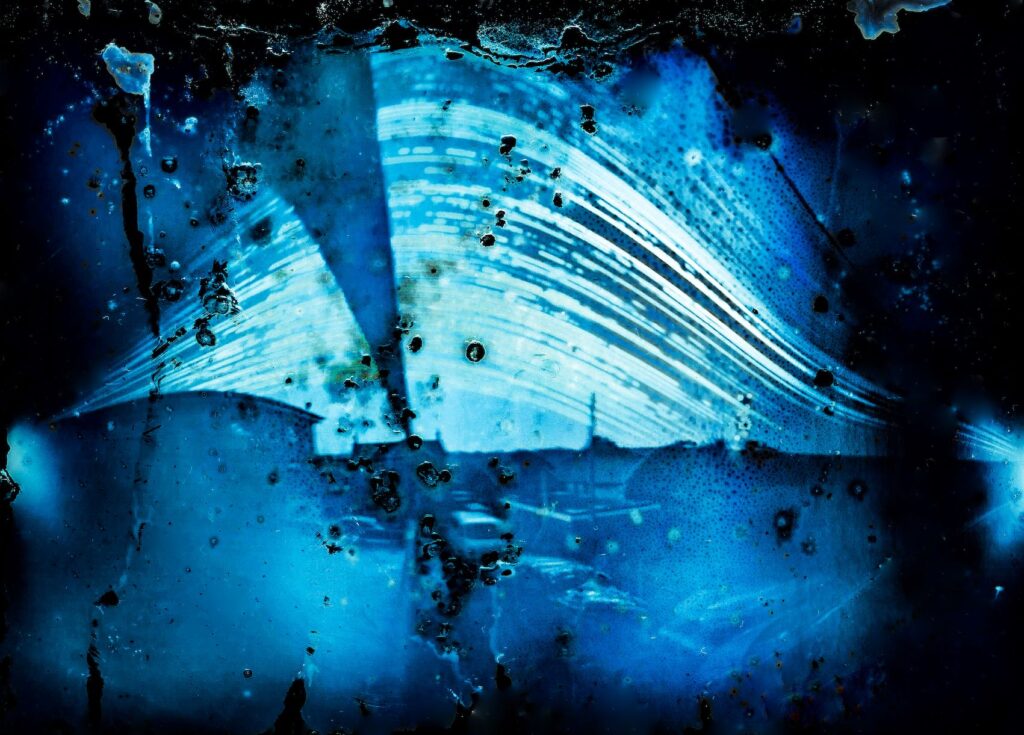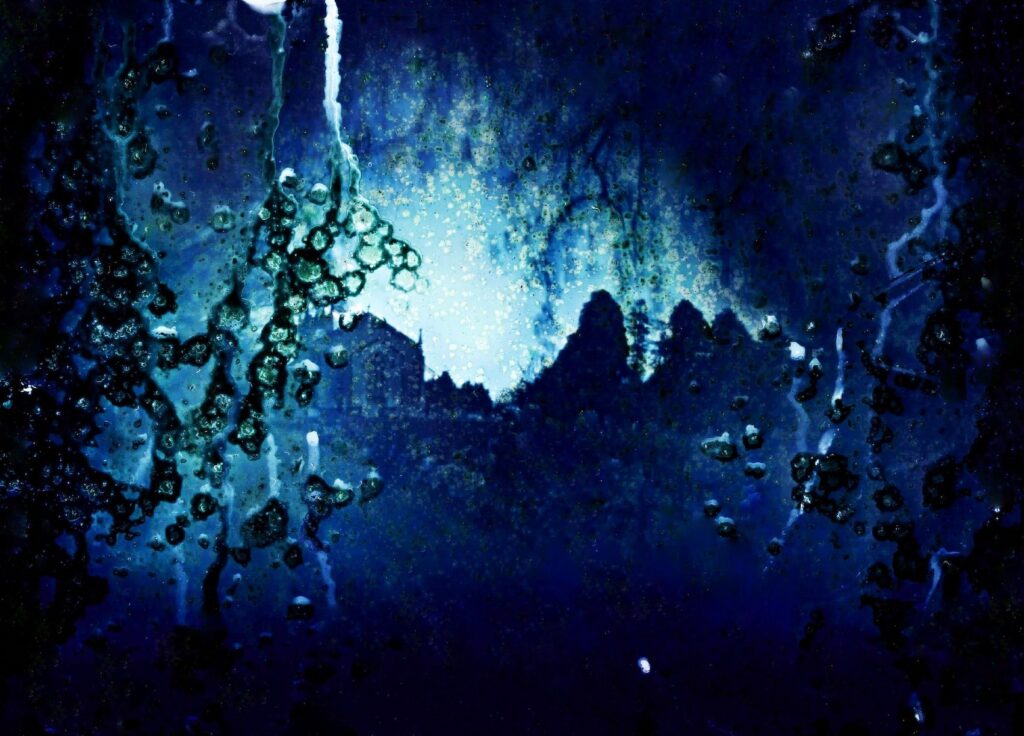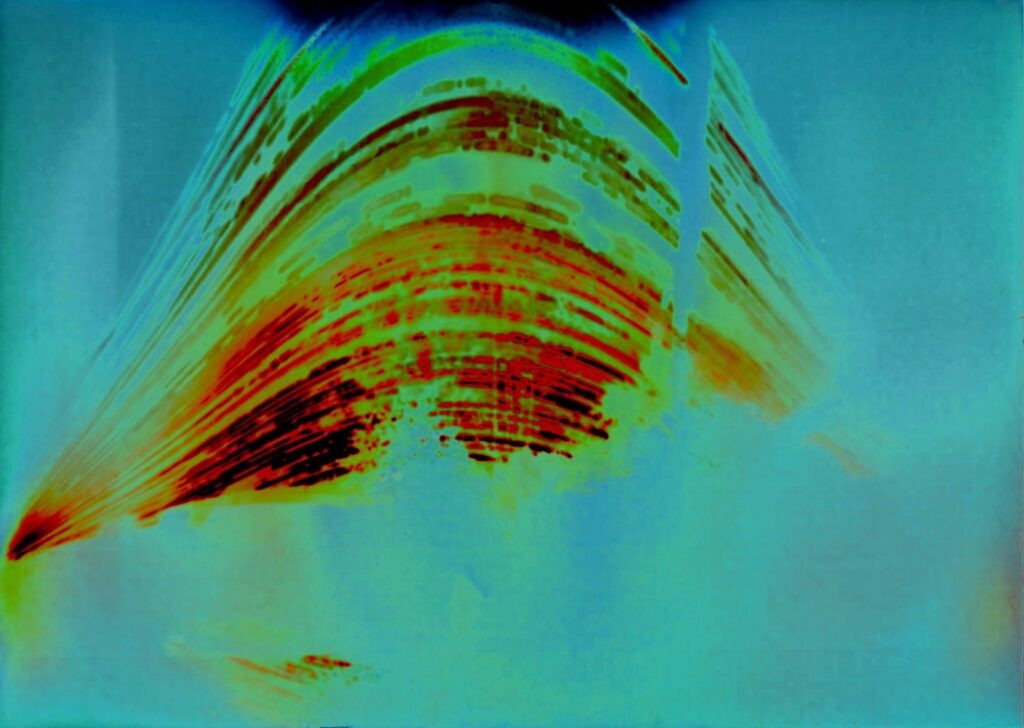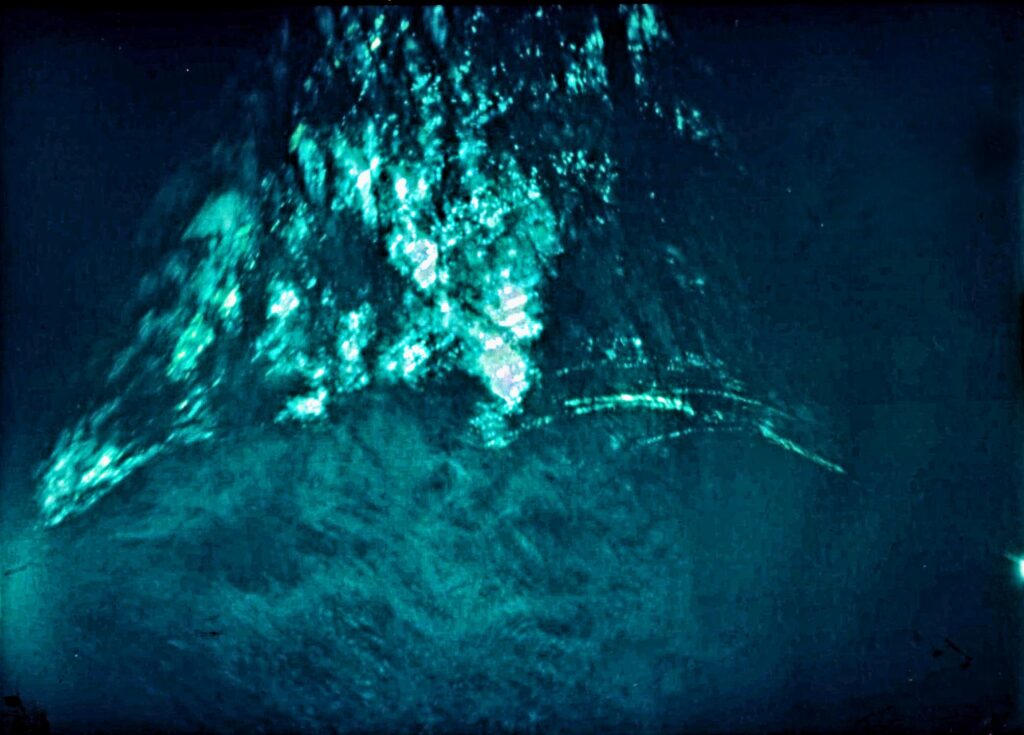
The sun rises and falls each day, its slow trek discreetly recorded by small tin cans, whose uninterrupted gaze captures every photon of sunlight travelling across the sky.
We usually think of photography as an instant process; images captured digitally in a fraction of a second, a solargraphic camera eschews such technology. Made low-tech from discarded drink cans, pinhole cameras have been set up by a group of Walking the Land artists to map the landscape in slow time, scattered through the country in trees, drainpipes, window sills, and railings, recording a period between the spring and winter equinox.
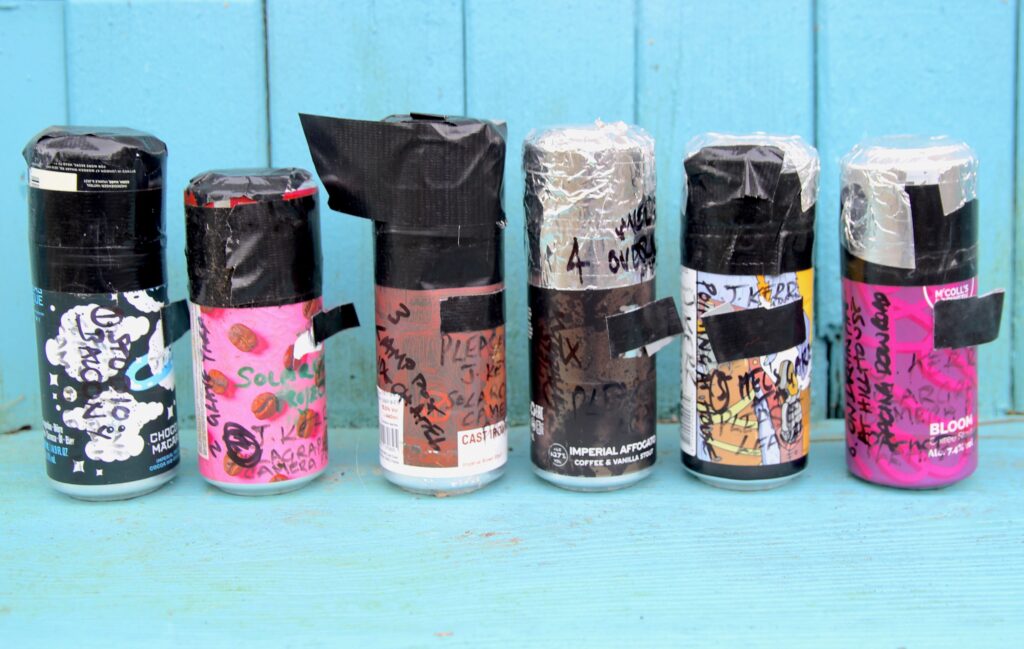
Each solargraphic camera can contains a sheet of b/w photographic paper, capturing light waves as they travel through the air, passing through a pinhole and onto the paper. As light slowly seeps in, separate light trails form to create an image that is only revealed when the photographic paper is processed several months later, scanned into a laptop and manipulated in a photo editor. The actions of the environment – rain and other elemental detritus – or unexpected canister movement, leave traces on the final picture, yet there is an absence of any moving objects such as people, animals or cars.
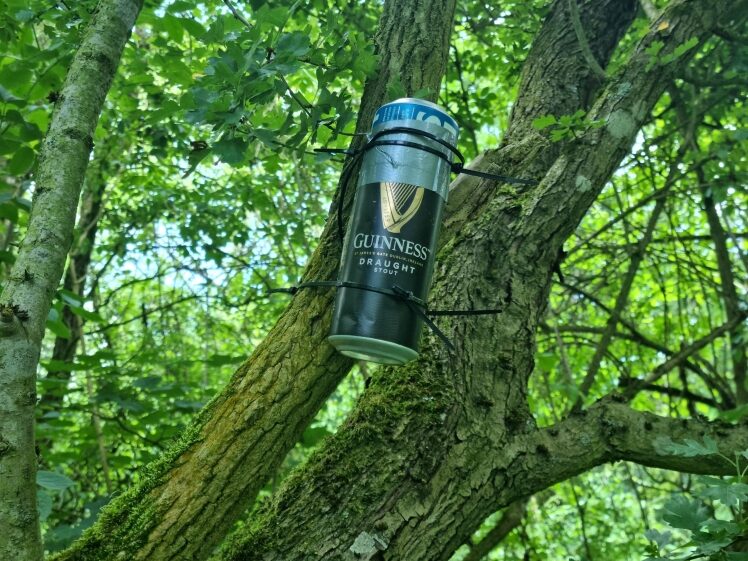
Each solargraph has its own geocode – a unique combination of three words that can be tracked to its location using the ‘what3words’ app.
The images below are a selection of the solargraphic images created.

